
What a wonderful month we have for our Tudor Society members with this 84 page magazine focusing on Tudor Explorers. The articles, as always, are excellent and we learned lots as the magazine went together. We hope you enjoy!
[Read More...]
What a wonderful month we have for our Tudor Society members with this 84 page magazine focusing on Tudor Explorers. The articles, as always, are excellent and we learned lots as the magazine went together. We hope you enjoy!
[Read More...]
On this day in Tudor history, 28th February 1525, the wizard earl, Gerald Fitzgerald, 11th Earl of Kildare, was born. He spent much of his life on the run, and I explain why and what happened.
Fitzgerald is recorded as dying in London of a natural death, but legend says otherwise! Find out about the legend regarding him dabbling in the dark arts and his ghost at Kilkea Castle.
[Read More...]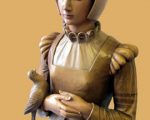
On this day in history, 27th February 1601, Mark Barkworth (also known by the alias Lambert), a Benedictine monk, was hanged, drawn and quartered, dressed in the habit of the Benedictine order, at Tyburn. Two others died that day: Roger Filcock, Jesuit, and Anne Line, a widow who had harboured priests. Barkworth was beatified in 1929, Line was canonised in 1970 and Filcock was beatified in 1987.
[Read More...]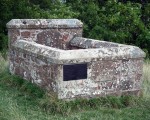
On 27th February 1545, the Battle of Ancrum Moor, part of the War of the Rough Wooing, took place near Jedburgh in Scotland.
In today’s video, I explain what caused the War of the Rough Wooing and what happened when the English and Scots’ forces clashed that day. I also talk about the legend surrounding Lilliard’s Stone, which can be found on the battlefield.
[Read More...]
On this day in Tudor history, 26th February 1564, Christopher Marlowe was baptised in Canterbury.
Kit Marlowe wasn’t only a gifted poet and playwright, he was one of Tudor England’s colourful characters and there is controversy over his life, his works, his faith (or lack of it) and his violent death. In this video, I introduce this man, look at the allegations made against him and examine the theories regarding his death in 1593.
[Read More...]
On 25th February 1601, Elizabeth I’s former favourite, Robert Devereux, Earl of Essex, was executed by beheading.
In today’s video, I share an excerpt from her book “On This Day in Tudor History” about Essex’s execution, which includes his scaffold speech, before explaining how this man went from being royal favourite to traitor. Pride really did come before a fall in the case of Robert Devereux, Earl of Essex.
[Read More...]
Thank you for all who came to the live chat with Rozsa Gaston, and congratulations to Laurie who won acopy of Rozsa’s book “Anne And Charles”. For those who couldn’t attend the chat, here is the transcript of our discussion. Hope to see you at the next live chat!
[Read More...]
On this day in Tudor history, 24 February 1500, a man who would be heir to three powerful dynasties and who would rule “the empire on which the sun never sets” was born. That man was Charles V, Holy Roman Emperor.
In today’s video, I share some Charles V facts. He was an interesting man!
[Read More...]
This week’s Sunday brain-stretcher is a crossword puzzle. How much have you learned from Claire’s recent “on this day in Tudor history” videos? Test your knowledge with this February Tudor events cross word puzzle. Good luck!
[Read More...]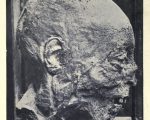
Henry Grey, Duke of Suffolk, father of Lady Jane Grey, was beheaded on this day in 1554 after being found guilty of treason. I explain how he went from being pardoned to being condemned to death and executed in just a few months, and also share his execution speech.
I also share a story regarding his alleged mummified head!
[Read More...]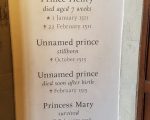
22nd February 1511 was a sad day for King Henry VIII and his first wife, Catherine of Aragon, for it was on this day that they lost their son, Henry, Duke of Cornwall. The royal couple had been married less than two years and had already lost two children.
In this video, I share an account of this devastating loss.
[Read More...]
In this week’s Friday video, our roving reporter, Philippa Lacey Brewell, visits Stratford upon Avon, starting at Shakespeare’s birthplace, through town to Shakespeare’s schoolroom, where she shows us inside, and ending up at Holy Trinity Church where William Shakespeare was buried.
[Read More...]
Tomorrow is the date for this month’s expert live chat. It’s with author Rozsa Gaston who spoke to us about Anne of Brittany, queen consort of France to two kings, Charles VIII and Louis XII.
[Read More...]
On this day in Tudor history, 21st February 1595, Jesuit pries, poet and writer Robert Southwell was hanged, drawn and quartered at Tyburn.
Who was he? Why was he executed? And why did Elizabeth I eventually move against Catholics? I explain in today’s video.
[Read More...]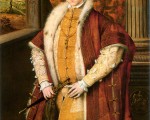
On this day in Tudor history, 20th February 1547, the boy-king Edward VI was crowned king by Archbishop Thomas Cranmer at Westminster Abbey.
In today’s video, I share details of Edward’s coronation, including the changes made due to his youth – the king was just nine years old. He needed cushions on his throne!
[Read More...]
Today we have a guest post from the DigVentures team who are currently working at Sudeley Castle. Thank you to Maiya of DigVentures for contacting me and sending me this article. Over to them…
Tudor history fans are being invited to help archaeologists unearth a remarkable set of ruins recently discovered in the grounds of Sudeley Castle.
Sudeley Castle, in the Cotswold town of Winchcombe, was one of the Tudors’ most beloved palaces and housed many of those closest to the crown. It’s where Anne Boleyn stayed with Henry VIII while he decided to dissolve the monasteries and where Katherine Parr, his last wife, later lived after he died.
Now, a small team of archaeologists from DigVentures are on a mission to unearth traces of another remarkable moment in Tudor history: a famously epic three-day party attended by Elizabeth I to celebrate her victory over the Spanish Armada, held somewhere in the castle grounds.
[Read More...]
On this day in Tudor history, 19th February 1547, the new king, the nine-year-old King Edward VI, son of King Henry VIII and Jane Seymour, processed through the streets of London on his coronation procession.
In this video, I share details of the procession route, descriptions of the streets, the huge procession, and the pageants and entertainment that Edward VI and the citizens of London would have enjoyed on that day in 1547. It sounds like a spectacular event.
[Read More...]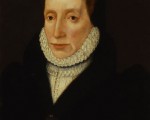
On this day in Tudor history, Lady Margaret Douglas, Countess of Lennox and Elizabeth I’s cousin, was informed of the murder of her son, Henry Stewart, Lord Darnley.
Margaret had been imprisoned in the Tower of Lonon in 1566 after Elizabeth I had heard news of Darnley’s marriage to Mary, Queen of Scots, and was still in the Tower in 1567. News of her son’s murdered was carried to her by William Cecil’s wife, Mildred, and Lady William Howard.
[Read More...]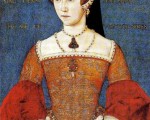
Happy Birthday to Queen Mary I! Yes, Mary I, a woman who has unfortunately gone down in history as “Bloody Mary” and whose reign is often seen as a failure, was born on this day in 1516.
In today’s video,I talk about Mary I’s birth and baptism and share some of Mary I’s achievements as queen. She’s so much more than Bloody Mary.
[Read More...]
On this day in Tudor history, 17th February 1547, Edward Seymour was made Duke of Somerset. He was already leading the boy-king Edward VI’s government as Lord Protector, something that King Henry VIII had not wanted, so how did he get to these dizzying heights and who exactly was Edward Seymour?
I explain what happened in 1547 and share some Edward Seymour facts.
[Read More...]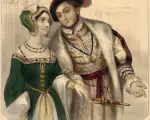
As we’ve had Valentine’s Day this week, I thought I’d test your knowledge of some famous Tudor couples and lovers. Good luck!
[Read More...]
On this day in Tudor history, 16th February 1547, King Henry VIII was laid to rest in St George’s Chapel at Windsor Castle. He was buried with his third wife, Queen Jane Seymour.
In this video, I talk about his burial and what happened to the sarcophagus that he had planned to use. You can see that beautiful sarcophagus today, but it is the resting place of another famous historical person and is not at Windsor.
[Read More...]
Just a reminder that February’s informal live chat is taking place in the Tudor Society chatroom tomorrow, Saturday 16th February, at 11pm UK time.
The first of February’s live chats is an informal one on the topic of finding and using Tudor documents. I will be the moderator and I will also share some of the resources I use to access primary sources, but otherwise it will be an informal chat where we can all share our experiences, our favourite documents, and what we’d like to find. Feel free to lurk in the background or join in.
[Read More...]
I’ve been sent a press release regarding key parts of the Mary Rose, Henry VIII’s favourite warship, being displayed for the first time since she sank in 1545. They will be on display at the Mary Rose Museum in Portsmouth, just in time for the UK’s half-term.
[Read More...]
In today’s video, I share an excerpt from my book “On This Day in Tudor History” about some dastardly deeds.
It was on this day in 1551 that businessman Thomas Arden was finally successfully murdered after a few botched attempts on his life. The rather tall tale surrounding these attempts served as an inspiration for an Elizabethan play. Find out what happened, and how those involved in the crime were punished.
[Read More...]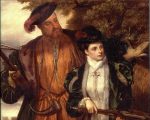
As yesterday was Valentine’s Day, I thought I’d have a look at some love letters or letters to do with love from the Tudor period. A belated Happy Valentine’s Day to you!
[Read More...]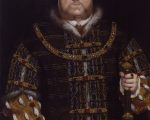
In today’s “on this day in Tudor history”, I take you back to 1547 and a rather horrible event that was seen as the fulfilment of a prophecy. Friar William Peto had warned King Henry VIII that if he carried on with his behaviour then he would end up like King Ahab. Strong words!
I then move on to a happier topic, Valentine’s Day in the Tudor period. Did the Tudors celebrate Valentine’s Day and what did they do to mark the occasion?
[Read More...]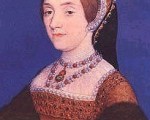
On this day in Tudor history, 13th February 1542, Catherine Howard, the former queen and fifth wife of King Henry VIII, and her lady-in-waiting, Jane Boleyn, Lady Rochford, were executed at the Tower of London.
In today’s “on this day” video,I look at the accounts of their executions, including the one where Catherine Howard says “I die a Queen, but I would rather die the wife of Culpeper.” Did Catherine say that and did Jane Boleyn use her scaffold speech to repent of bringing down Anne Boleyn and George Boleyn in 1536? I relate what happened on 13 February 1542 and what these women said on the scaffold.
[Read More...]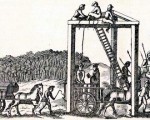
On this day in Tudor history, 12th February 1584, five Catholic priests, including James Fenn, were hanged, drawn and quartered at Tyburn. Fenn was beatified by Pope Pius XI in 1929.
Richard Challoner, the 18th century bishop, gives details of the life of priest James Fenn in his book Memoirs of Missionary Priests: And Other Catholics of Both Sexes, that have suffered death in England on religious accounts, from the year 1577, to 1684. Fenn was from Montacute in Somerset and was educated at New College, Oxford, and then Corpus Christi College, from which he was expelled after refusing to take the oath of supremacy. He acted as a tutor to students of Gloucester Hall before he took up a tutoring post in his home county of Somerset.
[Read More...]
In today’s “on this day in Tudor history”, I take us back to the reign of Queen Mary I.
On 12 February 1554, Lady Jane Grey, formerly Queen Jane, and her husband Guildford Dudley were executed. Guildford was beheaded on Tower Hill and Jane was beheaded at the Tower of London. I explain what led to their executions and relates what happened at them.
[Read More...]